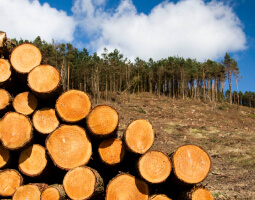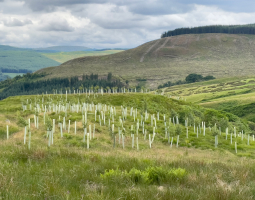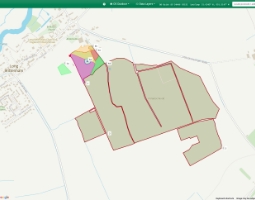Measuring Forest Carbon
Measuring forest carbon is important to quantify how much carbon is stored in our forests and how this is changing through time.
Forests exchange carbon dioxide (CO2) with the atmosphere, taking it up through photosynthesis and releasing it through respiration and decomposition, and building up a stock of carbon.
There is a straightforward relationship between the quantity of carbon in a forest and the implied amount of CO2 that forest has removed from the atmosphere. Information on exchanges of carbon between forests and the atmosphere is important when countries, organisations, or landowners want to track their net CO2 emissions (losses) to or CO2 uptake (removals) from the atmosphere. It may also be important for quantifying carbon credits for declaring and trading in carbon markets.
To ensure accurate reporting of net emissions and removals, it is important that the measurement framework and methods applied are accurate, robust and verifiable.
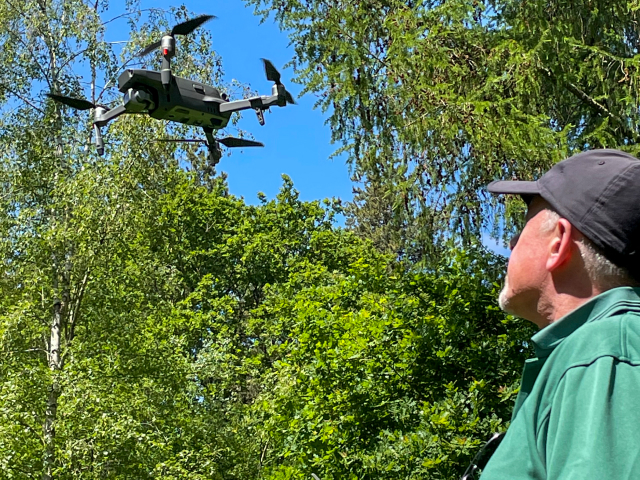
Measuring Carbon Stocks in Trees or Stands of Trees
Woodland carbon stocks are usually assessed across a woodland area (e.g. hectares) instead of measuring individual trees. This is because the number of trees tend to decline over the life cycle of a woodland, because the space available for individual trees within a woodland gets progressively constrained as the trees grow bigger. This leads to increasing competition between trees, eventually resulting in tree mortality. Alternatively, forest management activities, such as thinning to prevent too much competition between trees, can reduce their number within woodlands. Measurements that focus on the carbon stock of a single tree are generally not representative of the carbon stock potential of the woodland area.
The amount of carbon in trees can be derived from estimates of tree stem volume (usually in cubic metres), which can be converted to the equivalent quantity of biomass and carbon using the wood density for the tree species in combination with empirically derived conversion factors.
For individuals or small numbers of trees, stem volumes can be estimated using equations developed for different tree species, using measurements of stem diameter at breast height (dbh) and total height. Volumes can be converted to dry weight of biomass by applying estimates of wood density. The biomass of the other parts of trees (branches, foliage and roots) may be estimated using equations expressed in terms of tree dbh and height, or by applying conversion or expansion factors to the stem volume to estimate some or all of the other parts. The above ground volume of tree stems and woody branches may also be measured using photogrammetry or laser scanning (LiDAR) techniques.
For clumps and stands composed of many trees, it may not be practical to measure every tree. Methods can be applied to estimate volume, biomass and carbon in small plots, which can then be scaled up by the net area of the complete clump or stand. Alternatively, models can give estimates of total stem volume, or mean tree characteristics (e.g. diameter) for a given area (e.g. one hectare), which can be multiplied by the area of the clump or stand. In the UK, the forest growth models currently available require knowledge of tree species, age, initial tree spacing on establishment, information on how the woodland has been managed, and an estimate of stem volume growth rate per hectare known as yield class.
Measuring Tree Carbon Stocks at the Landscape Scale
The total tree carbon stored in a forest can be calculated by multiplying the forest tree carbon stock per hectare by the area of forest. This may require a statistical sample to estimate the average carbon stock per hectare. It may also be necessary to first divide the forest into groups of areas with similar tree species, ages, management types or harvest activities if these are variable. This information can be derived from various sources including plot-based samples, statistical data for timber harvest volumes, aerial laser scanning (LiDAR) or satellite imagery. A combination of the above sources may need to be employed depending on the data availability.
The harvested wood product carbon pool can be estimated by modelling the assumed inputs to the wood products pool (carbon gains) minus outputs (carbon losses). Carbon gains occur from the creation of new wood products, while carbon losses occur when wood products are discarded, when no longer in use, and burned or left to decompose.
Approaches to Measuring Forest Carbon Balance
To determine changes in the forest carbon stock, you need to measure the balance of carbon emissions and removals. There are two key approaches for this, the stock-change based approach and the flux-based approach.
Stock-change based approach
The most straightforward approach to estimate the forest carbon balance is to calculate the change in carbon stocks over a given period. An increase in forest carbon stocks represents a net removal of CO2 from the atmosphere, while a decrease represents a net emission. Two methods can be applied to calculate carbon stock change, the stock-difference method and the gain-loss method.
Stock-difference method
Carbon stocks are measured at two points in time (time 1 and at time 2). The difference in stocks between time 1 and time 2 is then calculated and can be divided by the length of time between measurements to determine an annual rate of carbon stock change. This requires measuring the carbon in each forest carbon pool at two or more time points
Gain-loss method
The gain-loss method is a process-based approach where the carbon gains and losses in each carbon pool are calculated and added together to determine the overall net carbon stock change. Carbon gains and losses are usually modelled, based on understanding of their underlying processes. Tree carbon gains occur from forest growth while carbon losses occur from mortality and harvesting.
This approach also reflects transfers between carbon pools, such as a tree dying and entering the deadwood carbon pool, which is represented as a loss from the living biomass carbon pool and a gain to the deadwood pool. Losses to the deadwood, litter and soil carbon pools can occur from decomposition, resulting in carbon returns to the atmosphere.
More information on the stock-change based approach can be found in chapter 2 of volume 4 of the IPCC guidelines Publications – IPCC-TFI (iges.or.jp)
Flux-based approach
The flux-based approach directly measures the net exchange of gaseous carbon (CO2) into or out of the forest from or to the atmosphere. An advantage of the flux-based approach is that the total net ecosystem flux is measured, accounting for all carbon pools, including deadwood and litter and other fractions which prove difficult to measure using stock-change methods. While the approach can identify how factors like weather or management affect the CO2 uptake, it is unable to disaggregate different carbon pools or account for carbon losses from forest harvesting directly, and it requires very expensive instrumentation so is largely only applicable as a research tool.
More information on the flux-based approach and a monitoring station established in the UK can be found at Straits Inclosure long-term carbon dioxide flux monitoring site – Forest Research.
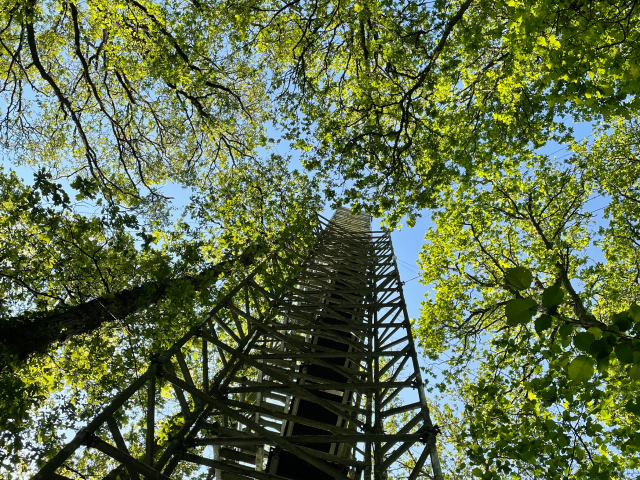
Measurement Frameworks and Standards
A number of measurement frameworks and standards exist, providing guidance for robust and consistent measurement and accounting for greenhouse gas (including CO2) emissions and removals:
IPCC guidelines for National Greenhouse Gas Inventories provide methods for estimating national inventories of anthropogenic greenhouse gas emissions. The primary use for these guidelines is for countries to calculate their total annual emissions, but the methods described can be applied at a range of scales.
The GHG protocol provides global standardised frameworks for companies and organisations to measure and account for GHG emissions.
The Woodland Carbon Code is the UK’s voluntary carbon standard to earn and sell carbon credits for the establishment of UK woodlands and includes methods for measuring forest carbon.
You may also be interested in
Further Resources
See the decision support tools page for details on a number of carbon measurement tools.


